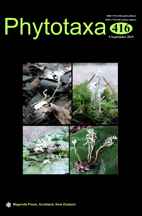Abstract
There are two competing hypotheses for the origin of carpels. The traditional hypothesis favors a phyllosporous origin and regards a conduplicate carpel as an ancestral form that is the result of longitudinal folding of a leaf bearing ovules along its margins. Alternatively, the carpel formation is interpreted as the result of a fusion between an ovule-bearing branch and its subtending leaf-like structure. Illicium is a member of the Austrobaileyales, which are one of the three ANA lines that diverged before all other extant angiosperms. This genus with apocarpous gynoecium has various ancestral morphological characteristics in terms of carpel, ovule, and floral apex. Although various aspects of Illicium morphology have been previously investigated, many evolutionary characteristics remain poorly understood. In this study, the development of carpel, ovule, and floral apex of I. lanceolatum was studied using LM and SEM. The results showed that the ovule primordium originates in the axillary position between the flower axis and carpel wall. So the carpel of Illicium is a leaf-like structure that encircles the ovule. This kind of carpel favors the carpel as a result of fusion between two parts, ovule-bearing branch and its subtending leaf-like structure.

